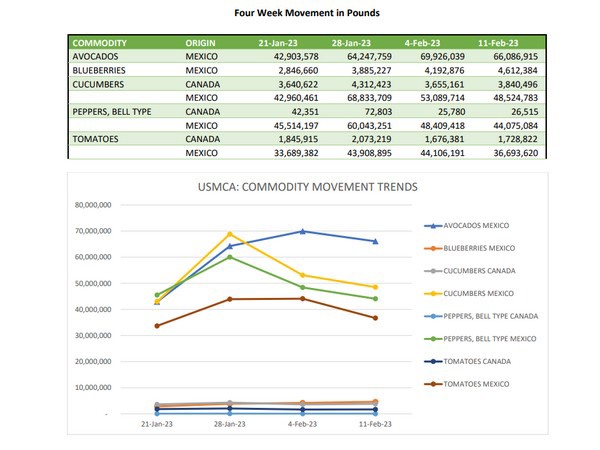In order to efficiently handle the growing volumes of produce traded between Mexico and the US, commercial traffic infrastructure and land Ports of Entry (POE’s) will need to be modernized. Trade along the entire U.S.-Mexico border is projected to grow geographically in the coming years. As recently as this year, the U.S. and Mexico issued a joint statement that included information on border modernization regarding both countries and committed nearly $5 billion at the federal level for these projects.
In terms of value, the U.S. held a 64% market share of all agricultural and related exports to Mexico in 2021. During the same year, 81% of Mexico’s total agricultural exports went to the United States. These infrastructure improvements and technological advances will help expedite commercial crossings, produce inspections and create a more robust supply chain between the two countries.
Lower blueberry volumes Peru
Blueberry imports from Peru through Philadelphia and New York City area ports of entry are expected to decrease as most growers are finished for the season. Movement of blueberries through Arizona, California and Texas on the other hand is expected to increase. Blueberry shippers continue to cite higher demand for product from Mexico over other growing regions. One shipper commented that they expect the last arrivals of blueberries from Chile this week a some growers have finished for the season.

Source: USDA, AMS
